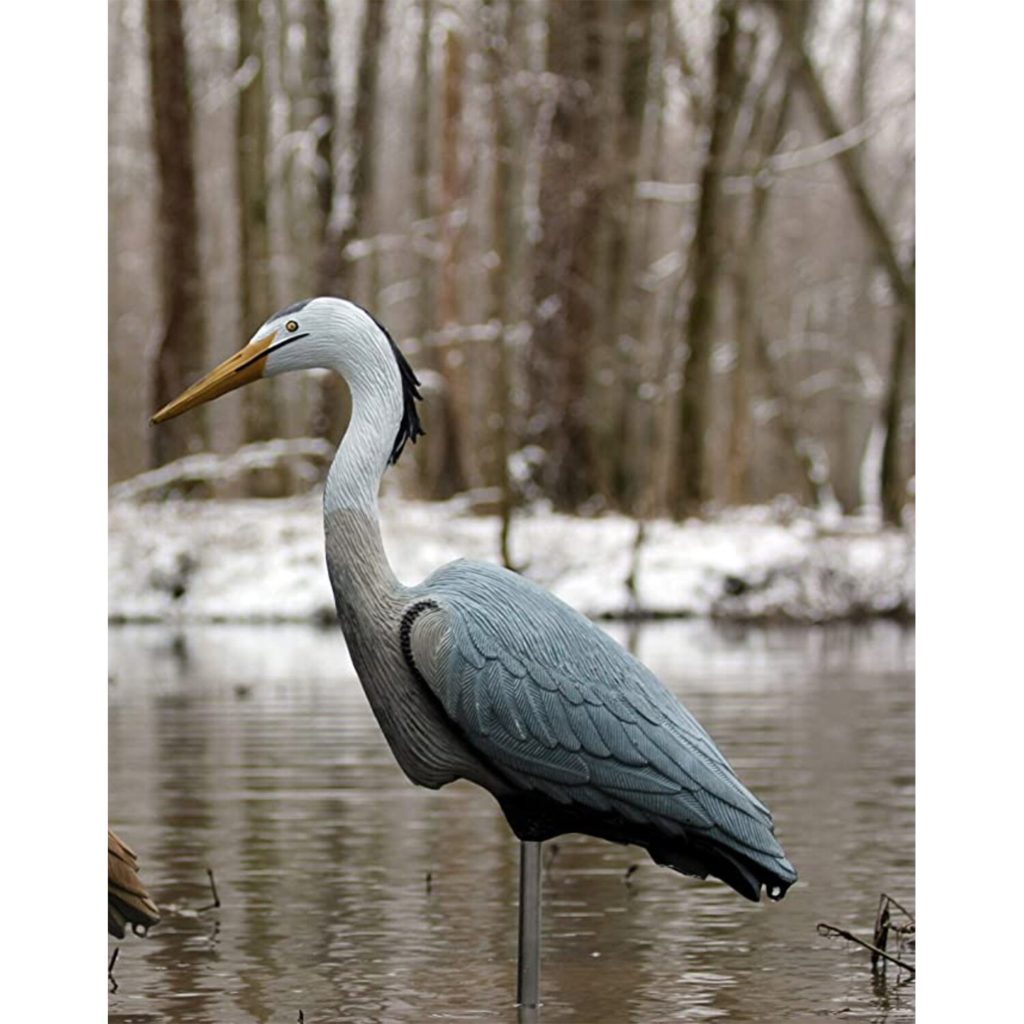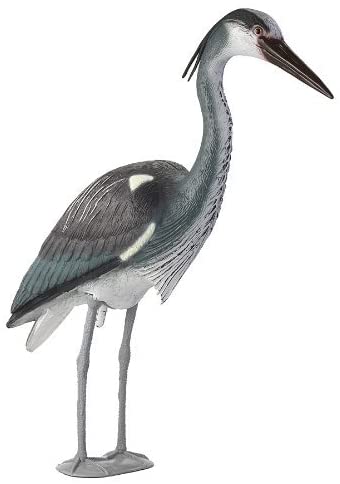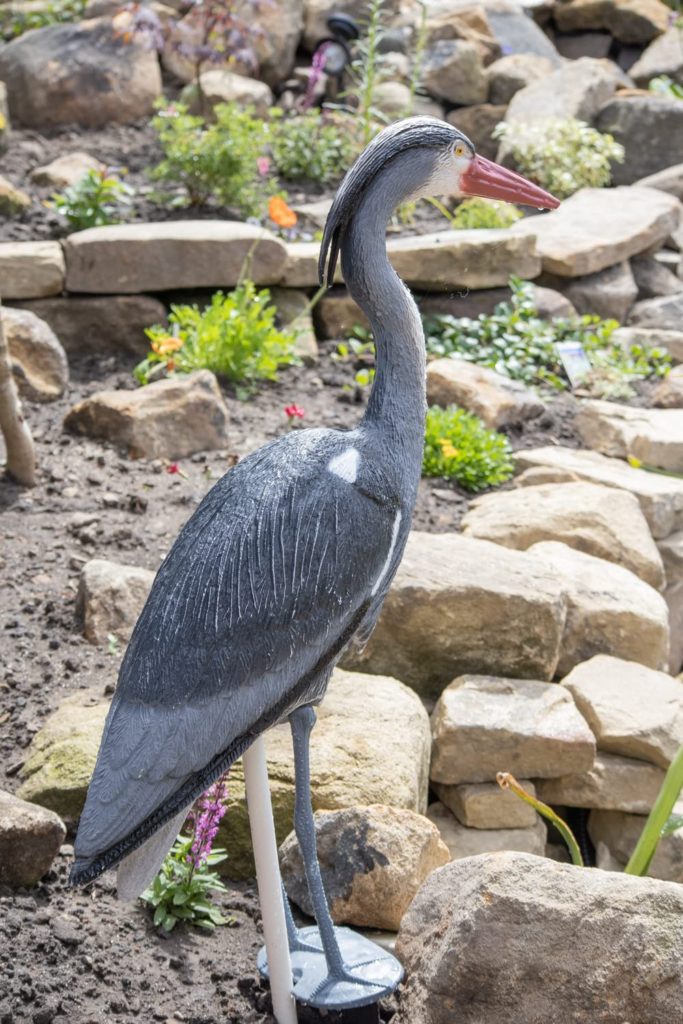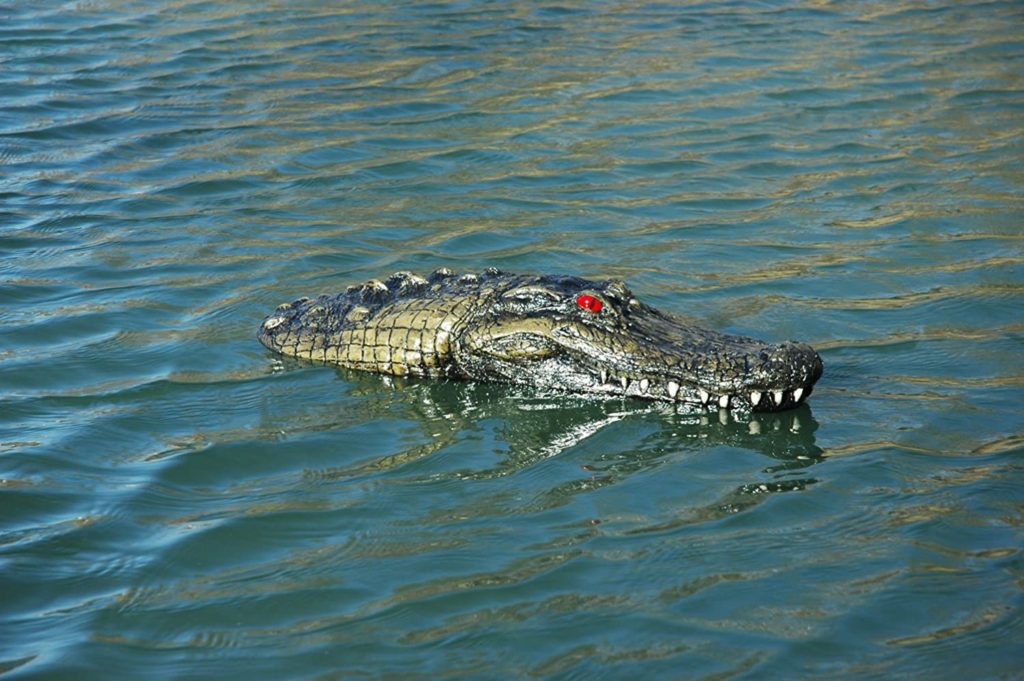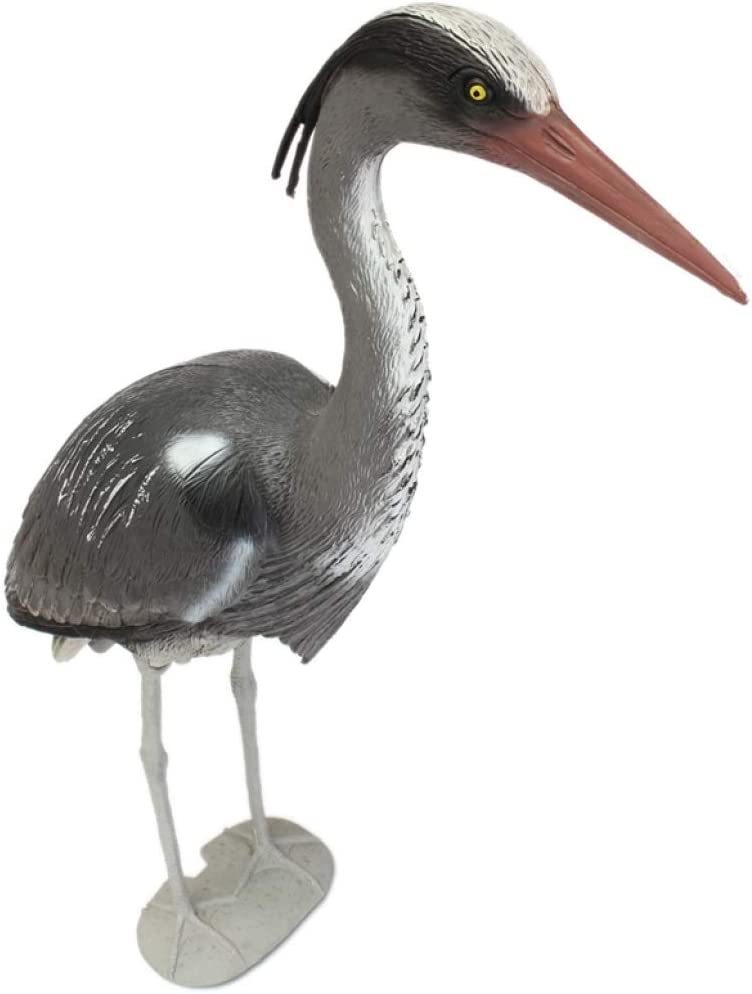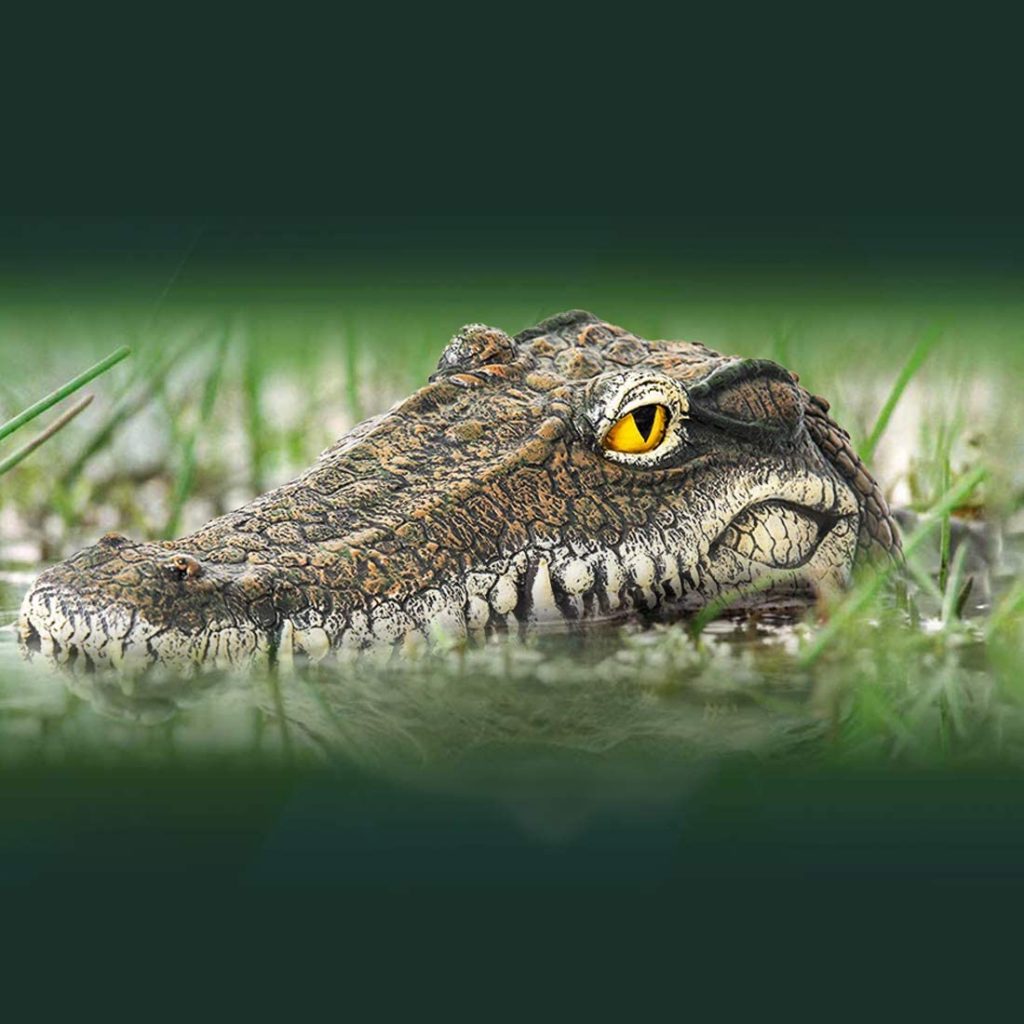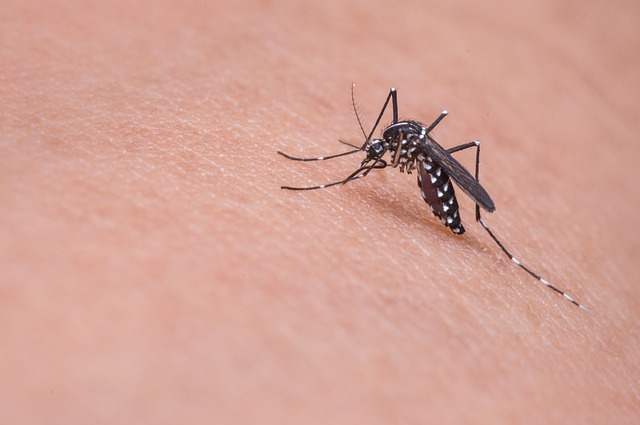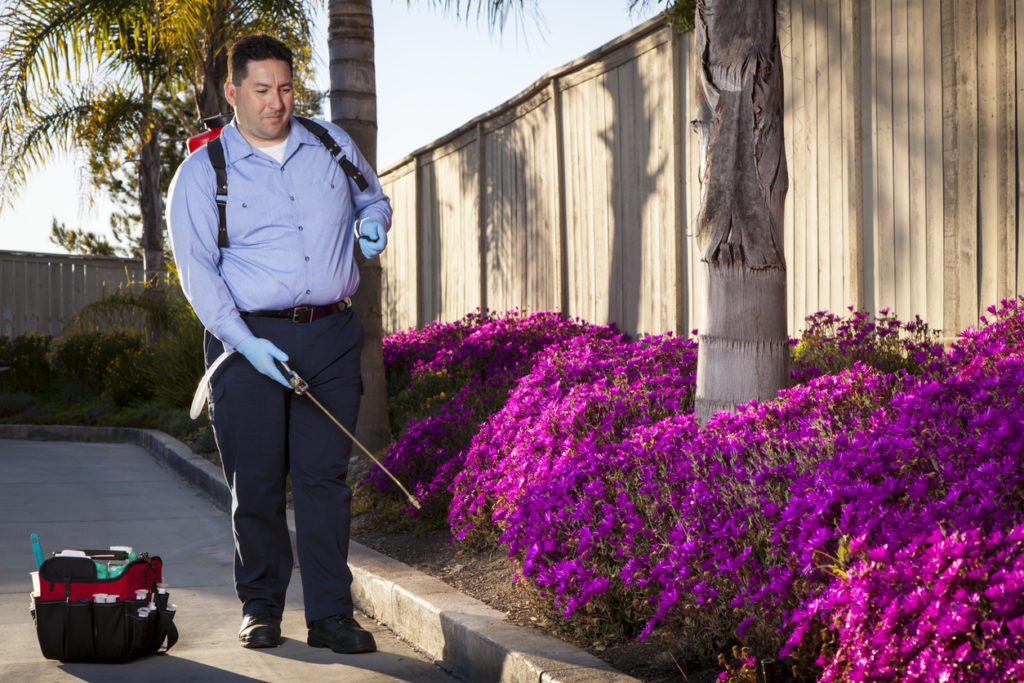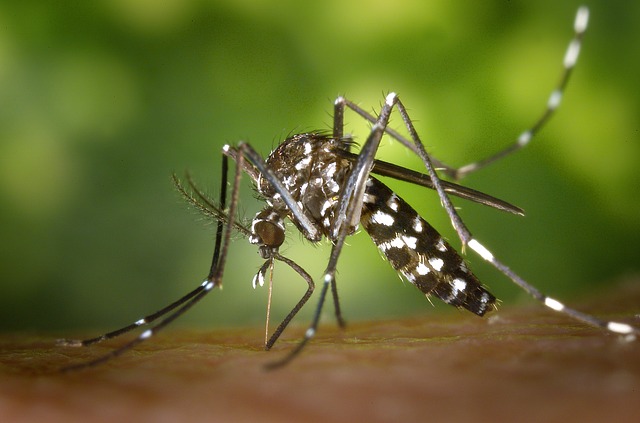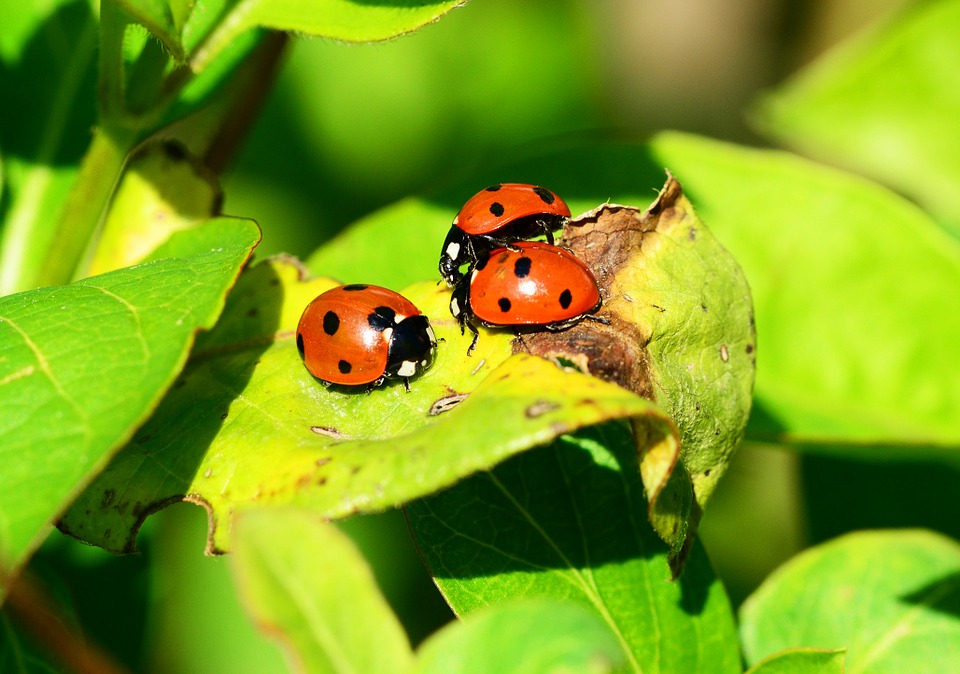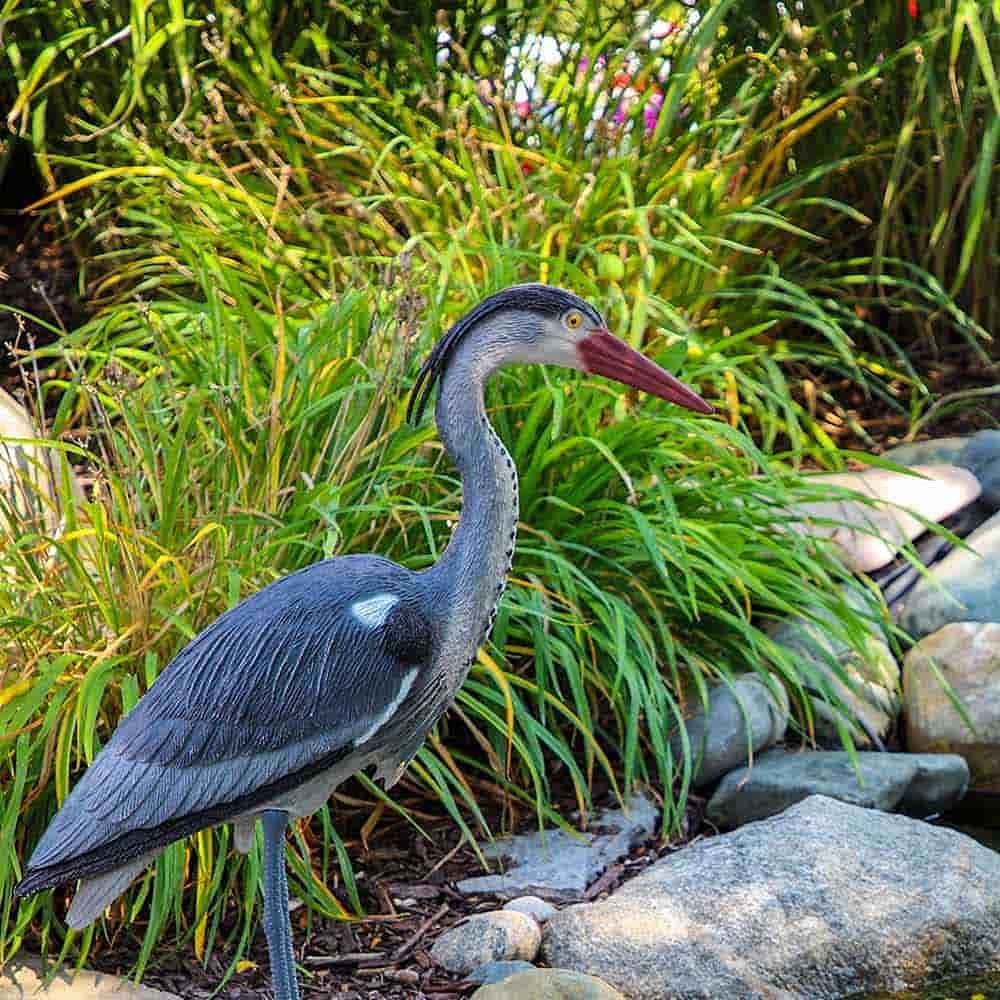
A hungry heron can easily make a meal out of expensive pond fish. One of the most effective methods for protecting your pond from these smart birds is with a great blue heron decoy. Here is your complete guide to them, with all the info and tips you’ll need to keep your fish safe.
The Great Blue Heron: A Beautiful Backyard Nightmare
The great blue heron is truly a majestic bird. However, despite its beauty, it can be a major nuisance for pond owners. That’s because these birds are predators. They’re designed perfectly by Mother Nature to hunt fish. Their long legs allow them to wade in the water in search of prey, and often in areas where other birds can’t reach.
Excellent eyesight helps herons to spot unsuspecting fish which they spear with their long sharp beaks and then swallow whole. When they fly by and see your backyard pond below, it’s a no-brainer for them to land and give it their full attention. Your crystal-clear pond that’s full of brightly colored fish with nowhere to hide is like a sushi buffet for these master predators.
It’s estimated that a hungry heron can actually catch and eat around one ten-inch pond fish per minute. And they can consume even larger size fish as well. So it’s no wonder that small and medium-size ponds can be quickly emptied of fish by a single bird. Herons also love to eat both baby geese and ducks from farm and backyard ponds as well.
Fight Herons With A Heron Decoy
Because of its large size and long beak which can be used as a weapon to defend itself, the great blue heron does not have many natural predators. However, this species is highly territorial when it comes to defending its feeding area from other herons. Therefore one of the simplest and most effective deterrents is using this natural behavior against them with a great blue heron decoy.
With a properly decoy placed in your yard real herons will see it as they fly over scanning for places to find food. They’ll assume it’s another real heron and won’t want to land in its feeding area. Herons will keep flying and find somewhere else to get their fish.
Great Blue Heron Decoy Basics
Decoys are typically made out of a durable plastic resin so that it’s tough enough to be used outdoors but also lightweight and easy to move. Most decoys are hand-painted using all-weather paint to have the same colors and markings as the great blue heron. They can be so lifelike that they not only fool other herons but people too.
To make sure they are as real-looking as possible heron decoys are also made to be life-size. Normally they stand somewhere around two and a half to three feet tall. And when it comes to pose, decoys are usually designed to be standing up so that their classic heron profile can easily be seen and identified by herons flying overhead.
To help keep them standing upright even in strong winds and weather decoys will typically come with a stake that can be inserted into the ground or mud. While many decoys come with a detachable stake others may have a stake permanently attached to the body instead of legs.
Where To Use A Great Blue Heron Decoy
When adding your decoy, the goal is to make it seem as if it is a real heron feeding in your pond, lake, or water feature. Therefore you will want to place it near the water’s edge or in the water itself. You may want to consider inserting the support stake of your heron decoy right into one of your potted plants that’s close by.
Placing a decoy on the surrounding rocks can also look very natural as well since it will seem as if the heron is scanning for food. If you have a much larger body of water you are trying to protect it’s generally recommended that one heron decoy is used per fifty feet of shoreline. This will discourage real herons from thinking they can be sneaky and get away with landing a bit further away.
Top Tips For Success
By following these tips you can help to ensure that your great blue heron decoy will be successful:
Move Your Great Blue Heron Decoy
Great blue herons are known for being highly intelligent birds. Once they have noticed your pond they may purposely fly over it as part of their daily routine to check and see if it’s heron-free. They may also land somewhere that gives them a high, and safe vantage point to check things out.
Because of this, you will want to move your decoy around every two or three days. Simply moving it a few feet and changing the direction it’s facing can go a long way by making it appear alive and active. It will help to prevent a sharp-eyed local heron from noticing that your decoy hasn’t moved the last few times he’s seen it when passing by.
And once a heron realizes that he’s not dealing with a real bird, he won’t hesitate to land and have himself a fish dinner at your expense. So just be sure to move it a few feet, change the direction it’s facing, etc.
Don’t Use It During Mating Season
A blue heron decoy is made to look just like a real blue heron, so if you use it during the mating season you may actually end up attracting a love-hungry heron to your pond. This is easily one of the most common mistakes people make.
And it’s almost always the reason behind reports of a heron standing right next to or near a decoy. The great blue heron mating season runs roughly from March through May each year. So it would be wise NOT to use your decoy during this time. Be sure to keep it stored safely away instead.
An Alligator For Extra Protection
Because great blue herons are observant birds it can often pay to use other decoys too. For instance, since alligators are natural predators of herons many pond owners will also add an alligator decoy in their pond as well.
Herons are water birds and therefore have an instinctive fear of gators even if they haven’t seen one or there are no real alligators in your area. A gator decoy is designed to float and move with the water current and wind which makes it look like there’s a real reptile swimming around the pond.
With a heron decoy at the water’s edge and an alligator patrolling the pond, it creates a double threat that most herons will be sure to avoid. An alligator also makes a good choice to be used on its own to protect your pond during the heron mating season, when you are storing your heron away. Other predator decoys such as coyotes and foxes can be used on land as deterrents as well.
Provide Artificial Hiding Places
Decoys are not foolproof, so you’ll always want to provide places for your fish to hide as a backup. And you will be glad you did. While adding aquatic plants can definitely help to hide fish somewhat, artificial shelters are designed specifically to keep fish safe.
Artificial shelters for fish can physically protect them from herons and other fish-eating predators such as raccoons and birds of prey. They can also keep entirely hidden from view and will be used by the fish as a shady place to keep cool when the sun gets too strong.
Other Great Blue Heron Decoy Uses
Decoys can also be used in several other ways such as:
Herons Decoys For Decoration
Luckily for nature lovers decoys serve a double function. They not only deter herons from your pond but also give you the pleasure of admiring what looks like a real heron. While from up close they may not look exactly like the real thing, they’re not meant to. They are designed to be viewed from a bit of distance and therefore can work well as a piece of pond, garden, or backyard décor.
If a plastic heron decoy can fool a sharp-eyed heron it can definitely fool the human eye too. And once you’ve added one don’t be surprised if you have concerned guests or neighbors alerting you that there’s what they think, is a real heron in your pond.
For those who would an even more attractive heron to look at up close, a statue can sometimes work to keep real herons away as well. Of course, you will need to choose a highly-realistic looking heron statue that is painted with lifelike colors if you want it to be effective. It will also need to be used as a decoy. This does include moving it periodically so you will need to choose a statue that isn’t too heavy to carry and reposition easily.
Great Blue Heron Decoys For Duck Hunting
While decoys will deter herons, they can help to attract ducks during hunting season. Herons are very cautious birds and only land in safe areas. Ducks know this, so hunters will often use a blue heron decoy for duck hunting. They place their heron near their duck decoys and then call the ducks in. As the ducks fly by and see the heron on the ground.
Because the ducks see that a heron has already checked out the situation and decided that it’s safe, it can give nervous ducks the confidence to land too. (That’s why fake herons are known as, “confidence decoys.”) Swan decoys are also used for this purpose when duck hunting as well.
When used properly a great blue heron decoy can help protect your fish from becoming a hungry heron’s next meal. So be sure to use the tips and advice in this guide to keep them safe and your pond heron-free!
Start Shopping for Heron Decoys!
The Complete Alligator Decoy Guide
Buy on Amazon Trying to keep predators and pests out of your pond or pool can seem like an impossible task. It can be time-consuming, frustrating, and the damage they cause can be costly and messy. With an alligator decoy, you’ll be able to use their instincts against...
How To Keep Mosquitoes Away From Your Outdoor Living space
If you want to enjoy your outdoor living space during the warmer months without getting eaten alive by mosquitoes, then there is work to be done. Read on below to find out exactly how to keep these blood-sucking pests away from your backyard when the temperature heats...
Pest Control Planning-3 Methods That Are Safe For Your Home and Family
Just the thought of dealing with an infestation of insects or rodents can be enough to send homeowners into a panic. Yet at the same time, the idea of spraying dangerous chemicals on your property can also be unsettling. Fortunately, you don't have to compromise your...
4 Natural Ways to Pest-Proof Your Garden and Patio
Summer is fast approaching, which means it's time to plan out all the fun outdoor activities in your garden. Whether that's having a barbecue, starting a vegetable patch, or chilling in an outdoor pool, summer is the perfect time to take advantage of your garden and...
Green Tips for a Green Garden
Unwanted pests and unwanted weeds are always popping up in the garden. These can ruin flowers or other plants around the yard. Instead of using dangerous chemical pesticides as a means of pest control, there are organic alternatives that work just as well. Here are...
